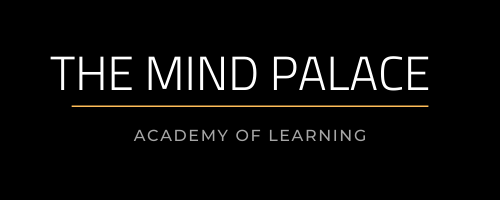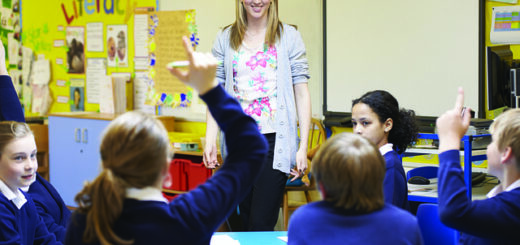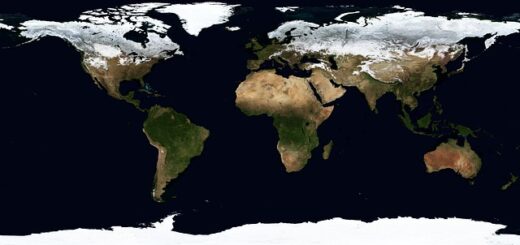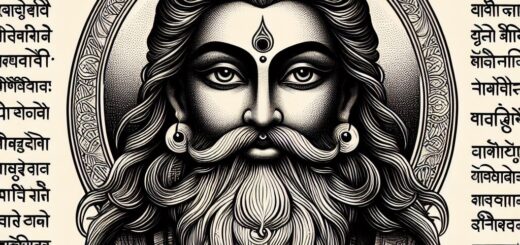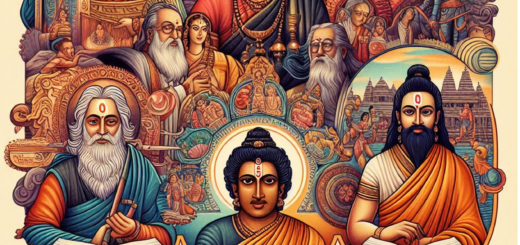Body Movements
Solved exercise of body movements

pic
Our body is capable of performing a wide variety of simple and complex functions. It is able to do so because of the internal structure that facilitates its movement.
HUMAN BODY AND ITS MOVEMENTS
Summary
The human skeleton is the internal framework which is responsible for giving support, shape and protection to our bodies. It contains 206 bones, each playing a distinct yet important task. The skeleton can be classified into two parts called as the axial and the appendicular. The axial skeleton comprises of the central part of the skull, spine, and ribs and the appendicular skeleton consists of the arms and legs.
Terms –
Limbs: The arms or legs of an animal.
Bones: These are the hard white structures below our skin that protect our internal organs. Bones are incapable of bending.
Joints: These are defined as the points at which two bones are fitted together. These are the points at which we can rotate and bend our bodies.

Types of Joints and their Location in the Human Body
Ball and socket joint

In the Ball and Socket joint, a partial spherical structure is present inside a socket allowing movement in all directions. e.g. hips and arms
A joint in which the rounded surface of a bone moves within a depression on another bone, allowing greater freedom of movement than any other kind of joint. It is also called a spheroidal joint.
Hinge joints

When bones can move along one axis, it indicates the presence of Hinge joint.
Joints have more movement than others, like the joints in toes and fingers. Such joints are known as hinge joints.Ex For instance, human fingers, toes, elbows, knees, and ankles contain hinge joints.
Types of Hinge Joints:The Elbow,The Jaw,The Hand,The Foot,The Knee,The Ankle:
Pivotal Joint

A Pivot joint is a joint that rotates. Examples of pivot joints in the body in the neck that allows the head to rotate and the ones between the radius and ulna that allow forearm rotation.
Fixed joints:
As the name suggests Fixed joint allows no movement to occur. e.g Skull
Some joints between bones in our head are different from those we have discussed so far. The bones cannot move at these joints. Such joints are called fixed joints.

Skeleton:
The skeleton consists of both fused and individual bones supported and supplemented by ligaments, tendons, muscles, and cartilage. The human skeleton is composed of around 305 bones at birth. The number of bones in the skeleton changes with age. It decreases to 206 bones by adulthood after some bones have fused together. feel the bones of your ankle and knee joints and compare these with the X-ray images. It seems to have many bones. It is made up of several small bones called carpels. They join the chest bone and the backbone together to form a box. This is called the rib cage. There are 12 ribs on each side of the chest. Some important internal parts of our body lie protected inside this cage.
Backbone

It is made up of many small bones called vertebrae. The backbone consists of 33 vertebrae. . It is made up of many small bones called vertebrae. The backbone consists of 33 vertebrate . The rib cage is joined to these bones. If backbone was made up of only one long bone.
Bones on the back are prominent where the shoulders are? They are called shoulder bone
The skull is made up of many bones joined together (Fig. 8.14). It encloses and protects a very important part of the body, the brain.
some additional parts of the skeleton that are not as hard as the bones and which can be bent. These are called cartilage cartilage.
Muscle

Muscles work in pairs. When one of them contracts, the bone is pulled in that direction. The other muscle of the pair relaxes. To move the bone in the opposite direction, the relaxed musle contracts to pull the bone towards its original position, while the first relaxes. A muscle can only pull. It cannot push. Thus, two muscles have to work together to move a bone.
Important Points to remember in a Human Skeleton:
- Bones provide support, protection, movement and perform several other functions.
- The bones in the skull (Cranium, Mandible, Maxilla) give protection to the brain.
- The long bones such as humerus, radius, ulna, tibia, fibula support the weight of body
- The carpals are located in wrist and tarsals are located in ankles. They are examples of short bones.
- The bones protecting the spine are called as the vertebral column. Cervical area (top 7 vertebrae), Thoracic (next 12), Lumbar (bottom 5 vertebrae), Sacrum (5 fused or stuck together bones) and Coccyx (the tiny bit at the bottom of the spine).
- The sternum and rib cage constitute the chest bones.
Some More Points to Remember

GAIT OF ANIMALS
Earthworm

- Does not have bones
- The earthworm body is made up of rings
- Slimy substances secreted by its body aids movement (NSO)

The body of an earthworm is made up of many rings joined end to end. This is called the shell and it is the outer skeleton of the snail but is not made of bones. The shell is a single unit and does not help in moving from place to place. It has to be dragged along. Place the snail on a glass plate and watch it. When it starts moving, carefully lift the glass plate along with the snail over your head. Observe its movements from beneath. A thick structure and the head of the snail may come out of an opening in Movement of earthworm does not have bones. It has muscles which help to extend and shorten the body. During movement, the earthworm first extends the front part of the body, keeping the rear portion fixed to the ground. Then it fixes the front end and releases the rear end. It then shortens the body and pulls the rear end forward. This makes it move forward by a small distance.
Snail
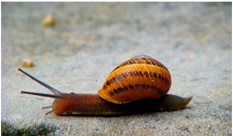
- It has a slimy body, which does not have bones.
- The shell of the snail does not help in movement. It has to be carried along.
- The foot of the snail is a thick structure and is made up of strong muscles.
- A muscular organ called ‘Foot’ helps in locomotion.
Cockroach

- Belongs to Phylum Arthropoda
- Its Exoskeleton is hard and stiff.
- 3 pairs of legs help in walking and 4 wings help to fly
- The body muscles move the wings when it flies
Cockroaches walk and climb as well as fly in the air. They have three pairs of legs. These help in walking. The body is covered with a hard outer skeleton. This outer skeleton is made of a number of plates joined together and that permits movement. There are two pairs of wings attached to the body behind the head. The cockroaches have distinct muscles those near the legs move the legs for walking. The body muscles move the wings when the cockroach flies.
Birds

- Their forelimbs are modified into wings
- Presence of hollow and light bones, reduces weight.
- Hind limbs help in walking and perching
- They have strong shoulder bones
Birds fly in the air and walk on the ground. Some birds like ducks and swans also swim in the water. The birds can fly because their bodies are well suited for flying. Their bones are hollow and light. The bones of the hind limbs are typical for walking and perching. The breastbones are modified to hold muscles of flight which is used to move the wings up and down.
Fish

- It possess a streamlined shape which enhances locomotion
- Coordination between muscles and tail help the fish to move.
- Fins aid the movement in the water
This body shape is called streamlined. The shape is such that water can flow around it easily and allow the fish to move in the water. The skeleton of the fish is covered with strong muscles. During swimming, muscles make the front part of the body curve to one side and the tail part swings towards the opposite side. This makes a jerk and pushes the body forward. A series of such jerks make the fish swim ahead. This is helped by the fins of the tail. Fish also have other fins on their body which mainly help to keep the balance of the body and to keep direction, while swimming.
How do snakes move:
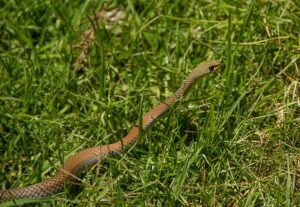
- Presence of a long backbone and thin muscles.
- Loops made by its body help in moving forward.
- Moves fast but not in a straight line
- They cannot move on a frictionless surface.
Snakes have a long backbone. They have many thin muscles. They are connected to each other even though they are far from one another. Muscles also interconnect the backbone, ribs, and skin. The snake’s body curves into many loops. Each loop of the snake gives it a forward push by pressing against the ground. Since its long body makes many loops and each loop gives it this push, the snake moves forward very fast and not in a straight-line
Exercise
1. Fill in the blanks:
(a) Joints of the bones help in the movement of the body.
(b) A combination of bones and cartilages forms the skeleton of the body.
(c) The bones at the elbow are joined by a hinge joint.
(d) The contraction of the muscles pulls the bones during movement.
2. Indicate true (T) and false (F) among the following sentences.
a) The movement and locomotion of all animals is exactly the same. (False )
(b) The cartilages are harder than bones. ( False)
(c) The finger bones do not have joints. (False )
(d) The forearm has two bones. (True )
(e) Cockroaches have an outer skeleton. (True )
3. Match the items in Column I with one or more items of Column II.
| Column I | Column II |
| Upper jaw | is an immovable joint |
| Fish | Have fins on the body, Have a streamlined body |
| Ribs | Protect the heart |
| Snail | Shows very slow movement |
| Cockroach | Has an outer skeleton |
4. Answer the following:
(a) What is a ball and socket joint?
a) The rounded end of one bone fits into the cavity (hollow space) of the other bone. Such a joint allows movements in all directions, which is called ball and socket joint.
b) Which of the skull bones are movable?
Lower jaw
(c) Why can our elbow not move backwards?
Our elbow cannot move backwards because it has hinge joints which only allow back to forth movements.
VERY SHORT ANSWER TYPE QUESTIONS
1. What do you mean by movement?
Ans: The changing position of the body or any part of the body is called movement.
2. At which part does the arm rotate?
Ans: The arm rotates on the round pit-like structure.
3. If you tie a scale with your arm, are you able to bend your elbow?
Ans: No, we cannot bend our elbow.
4. Name the places where two parts of the body are seen to be joined together.
Ans: These places are called joint.
5. If there are no joints then will it be possible to move?
Ans: No, it is not possible.
6. Can bones be bent?
Ans: No, bones cannot be bent.
7. Can we bend our body at every part?
Ans: No, we can bend our body only at joints.
8. How many types of joints are there?
Ans: There are five types of joints in our body.
9. Name the various types of joint.
Ans:
(i) Ball and socket joints
(ii) Pivotal joints
(iii) Hinge joints
(iv) Fixed joints
(v) Gliding joints
10. What is cavity in bone?
Ans: The hollow space in the bone is called cavity.
11. Give two examples of ball and socket joint.
Ans:
(i) Joint of upper arm and shoulder.
(ii) Joint of thigh and the hip.
12. Give an example of pivotal joint.
Ans. The joint of skull with backbone.
13. Give two examples of hinge joints.
Ans:
(i) Joints in fingers
(ii) Joints in knee
14. Give an example of fixed joint.
Ans: Joint of cranium skull.
15. Give an example of gliding joint.
Ans: The joint in backbone.
16. What is skeleton?
Ans: The framework of bones in our body is called skeleton.
17. What are ribs?
Ans: The bones of the chest are called ribs.
18. What is rib cage?
Ans: Ribs are joined with backbone to form a box. This box is called rib cage.
19. What are shoulder bones?
Ans: The shoulder bones are formed by the collar bone and the shoulder blade. It connects the upper part of the chest and bones of the arm.
20. What are pelvic bones?
Ans: The bones which enclose the body part below the stomach are called pelvic bones.
21. What are cartilages?
Ans: Some additional parts of the skeleton which are not as hard as bones and are elastic in nature and can be bent are called cartilages, e.g. cartilage of ear.
22. Name the three components of skeleton.
Ans: Skeleton is made up of many bones, joints and cartilage.
23. Name the parts of the body which help in movement.
Ans: Contraction and relaxation of muscles and bones and joints help in movement.
24. Name two animals which move without bones.
Ans: (i) Earthworm (ii) Snail
25. Give an example of animal which can walk, climb and fly in the air.
Ans: Cockroaches.
26. Name the organ in cockroach which helps in walking.
Ans: The three pairs of legs in cockroach help in walking.
27. Which part of the cockroach help in flying?
Ans: There are two pairs of wings attached to the breast which help them in flying.
28. Name a bird which can swim in water.
Ans. Duck.
29. What do you mean by streamlined?
Ans: If the body tapers at both the ends then such, shape of the body is said to be streamlined.
30.How does the snake move?
Ans: Snakes have a long backbone and many thin muscles which help in the movement. The snake’s body curves into many loops. Each loop of the snake gives it a forward push by pressing against the ground.
31. What do you mean by fractured bone?
Ans: Fractured bone means broken bone.
32. Why are fractured bones plastered?
Ans. Plaster keeps broken bones at their right place so that they grow and join properly.
33. Name organs that are protected by the rib cage?
Ans: Heart and Lungs.
34. Why do we need two muscles together to move a bone?
Ans: A muscle can only pull, it cannot push. Thus, two muscles are required to work together to move a bone. When one muscle contracts, the bone is pulled. When another muscle of the pair pulls, it brings the bone in its original position.
35. Name three animals that have streamlined body.
Ans: Fish, Birds, Snake.
36. Many people suffer from a problem called arthritis. Explain its connection with movement.
Ans: Arthritis is the pain in joints. With this problem people find difficulty in moving from one place to another.
37. How is a bird’s body adapted for flying?
Ans: The following adaptations are seen in the body of birds.
(i) Bones are hollow.
(ii) Forelimbs are modified into wings.
(iii) Body is streamlined.
SHORT ANSWER TYPE QUESTIONS
1. What are joints? Write the names of various types of joints.
Ans: The places where two parts of the body seem to be joined together are called joints. There are following types of joints:
- Ball and socket joints
- Pivotal joints
- Hinge joints
- Fixed joints
- Gliding joints
2. What is skeleton? Draw a diagram to show the human skeleton.
Ans: The bones in our body form a framework to give a shape to the body. The framework is called skeleton.

3. Write two ways by which we may know the shape of human skeleton.
Ans:
(i) We can know the shape of skeleton by feeling.
(ii) We could know the shape by X-ray images of human body
4:Write the differences between bones and cartilage.
Ans:
| Bone | Cartilage |
| (i) They are hard. | (i) They are soft. |
| (ii) They cannot bend. | (ii) They can bend. |
| (iii) They are used to make the framework of the whole body. | (iii) They help to make some parts of the body. |
5. How do the muscles work?
Ans: The muscles work in pairs. When one of them contracts, the bone is pulled in that direction, and the other muscle of the pair relaxes. To move the bone in the opposite direction, the relaxed muscle contracts to pull the bone towards its original position, while the first relax. A muscle can only pull. It cannot push.
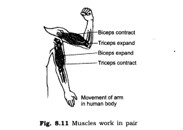
6. How does the earthworm move?
Ans: Earthworm does not have bones. It has muscles. During the movement, earthworm first extends front part of the body keeping the rear portion fixed to the ground. Then it fixes the front and releases the rear end. It then shortens the body and pulls the rear end forward. In this way by repeating such muscular expansions and contractions earthworm moves.

7. How does the snail move?
Ans: The rounded structure on the back of the snail is called shell. It is the outer skeleton (exoskeleton) of snail. When it starts moving a thick structure and the head of the snail may come out of an opening in the shell. The thick structure is called foot, which is made up of strong muscles. It helps snail in moving.

8. How does fish move in water?
Ans: The body of fish is streamlined. The streamlined shape helps the fish to move in water. The skeleton of fish is covered with muscles which make the front part of the body to curve to one side and the tail part swings towards the opposite side. This makes a jerk and pushes the body forward. In this way it moves in water.

LONG ANSWER TYPE QUESTIONS
1. Explain various kinds of joints found in our body and give examples of each.
Ans: There are five types of joints in our body:
(i) Fixed joints: Those joints which do not allow movement are called the fixed joints.
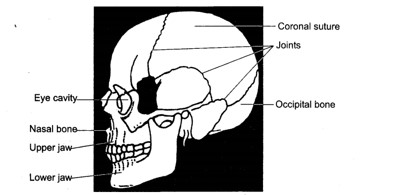
(ii) Ball and socket joint: This joint allows movement in all directions. The rounded end of one bone fits into the hollow space of other bone. For example, joint between upper arm and shoulder.
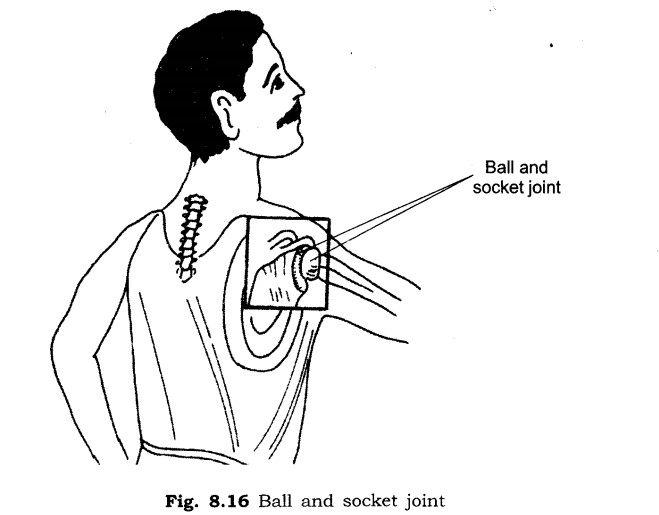
(iii) Pivotal joint: This type of joint allows movement in all planes, i.e. up and down, side, and other planes. For example, head.
(iv) Hinge joint: The joint which allows movement only in one plane is called the hinge joint. For example, fingers, and knees.

(v) Gliding joint: These joints allow only a limited amount of movement of the sliding nature of cartilage. For example, the joints of the backbone.

